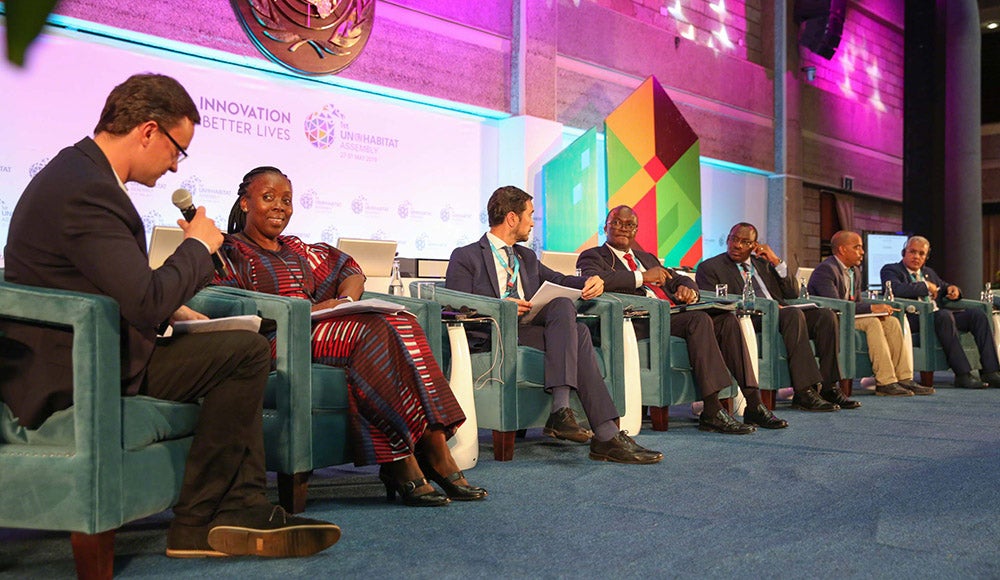NAIROBI 30 May 2019 – Africa has more road deaths than any other continent with pedestrians and cyclists most affected. Delegates at a UN-Habitat Assembly event on Innovative Urban Mobility for Sustainable Cities in Africa heard that the high death toll was connected to the sprawling nature of cities and towns and increasing motorisation. This forces people to walk long distances along unsafe roads to work or other destinations.
The meeting also heard that most African cities suffer from informal, poor quality and largely unregulated transport which costs residents a significant portion of their income.
Rafael Tuts, Director of Programme Division at UN-Habitat, speaking on behalf of Maimunah Mohd. Shariff, Executive Director of UN-Habitat emphasized the need for more inclusive, safe, and reliable transport to ensure social and economic development.
“Transport is about reaching destinations and opportunities,” he said. “Primarily, it is about accessibility and not the means of transport. This means we should re-think how our cities are planned. Nowhere is this recognition more important than on the African continent, which, together with Asia, is the fastest urbanizing region of the world.”
The meeting, co-organised by UN-Habitat, the Africa Transport Policy Programme (SSATP) and the International Association of Public Transport (UITP) brought together Ministers and experts on urban mobility.
Kenya’s Cabinet Secretary for Transport, Infrastructure, Housing, and Urban Development, James Macharia, discussed transport challenges in Nairobi and the introduction of an integrated transport system combining Bus Rapid Transport with commuter trains and investments in the road network.
Claver Gatete, Minister of Infrastructure, Rwanda, outlined transport regulatory requirements and highlighted the role technology plays in “tap and go” payment on buses, and bus arrival information.
Ethiopian State Minister, Tazer Gebreegziabher Berha, discussed plans to triple the road network, highlighting challenges around maintaining infrastructure, administering the rail networks, and highway connectivity issues. And Noureddine Selmi, Minister of Equipment, Housing and Territorial Planning, Tunisia, discussed a major highway project with Morocco and Libya on a major highway project.
The Africa Director at the Institute for Transportation and Development Policy, Chris Kost, said there should be a dedicated space for public transport in city planning, not as an after-thought, but as a priority.
During the final panel on Inspiring Innovation and Mobility Solutions business leaders and academics shared examples of new technology.
Arlene Ducao of Multimer Biosensors presented a tool which uses biometric data to measure cyclists’ stress levels in Nairobi, Cezanne Maherali from Uber East Africa, highlighted Uber Movement, a tool using Uber data to enhance city planning, and Speeds, a tool measuring average speed on individual streets. In addition Filip Lövström, from Opibus AB, focused on electric safari vehicles and motorbikes and Alex Mungai, from Little Cab Kenya, discussed environmental sustainability, employment generation, and safety.
Jonas Tesfu from the Pangea Accelerator pointed out that Government support to startups and fledgling entrepreneurs in the area of mobility will address the mobility problems while also creating employment opportunities for youth.
A “communiqué to policy makers”, which identifies key challenges and makes recommendations to improve mobility in Africa’s growing cities was presented and the session closed with the remarks of Andre Dzikus, Coordinator of UN-Habitat’s Urban Basic Services Branch who pointed to the way forward on how UN-Habitat and partner organisations plan to support countries in their efforts to improve mobility for all.
